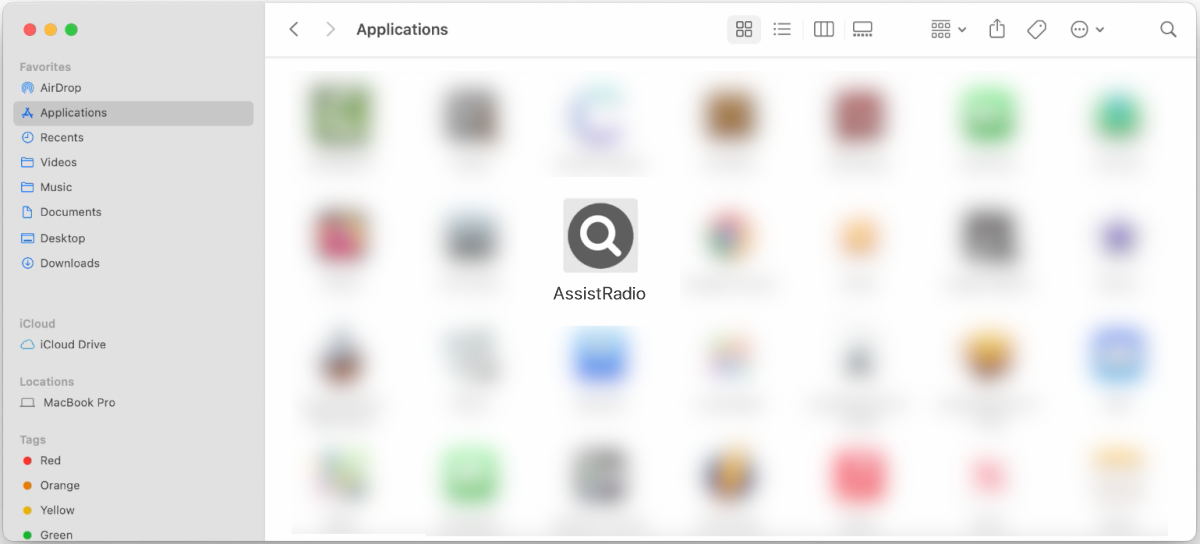What Is AssistRadio?
AssistRadio is a type of adware that is designed to infect Mac computers and bombard users with unwanted advertisements. This malicious software typically enters a Mac system through deceptive means, such as bundled with freeware or shareware downloads, or through malicious websites. Once installed, AssistRadio will start displaying pop-up ads, banners, in-text ads, and other types of advertisements on the infected Mac.
To infect a Mac, AssistRadio takes advantage of vulnerabilities in the operating system or uses social engineering tactics to trick users into downloading and installing the adware. Once the adware is installed, it will modify the browser settings to inject ads into web pages and redirect users to sponsored websites. AssistRadio can also track the user’s browsing habits and collect personal information for targeted advertising purposes. To protect your Mac from AssistRadio and other types of adware, it is important to be cautious when downloading software from the internet and to regularly update your operating system and security software.

How to Remove AssistRadio:
- Remove AssistRadio Automatically
- Delete Rogue Applications
- Remove Rogue Profiles from Macbook
- Remove AssistRadio From Browsers
- How to Protect Your PC From AssistRadio and Other Adware
Remove Gloss Glamour Automatically
You may try to remove the adware automatically or use the manual instructions provided below.
However it is still recommended that you scan your system with a good antivirus or anti-malware tool, to find and remove other possible malware and PUPs (potentially unwanted programs) that may have been installed along with AssistRadio.
Some alternatives:
Spyhunter (macOS and Windows)
Delete Rogue Applications:
Go to Applications folder and delete new and suspicious apps.
- On the top menu select Go => Applications.
- Drag an unwanted application to the Trash bin.
- Right-click on the Trash and select Empty Trash.
Remove Rogue Profiles from Macbook:
- Open System Preferences.
- Click on Profiles.
- Click the minus button below to delete rogue settings.
Remove AssistRadio from browsers:
Remove AssistRadio and other new and unfamiliar extensions.
Remove AssistRadio from Safari:
- On the top menu select Safari => Preferences (or Settings).
- Select Extensions tab.
- Select an extension you want to delete and click Uninstall button under the extension’s description.
Remove AssistRadio from Google Chrome:
- Click on three dots menu button
 .
. - Select More tools => Extensions.
- Find an extension you want to delete and click REMOVE under it.
- Click Remove in the dialog box.
AssistRadio Removal from Mozilla Firefox:
- Click on menu button
 and select Add-ons.
and select Add-ons. - Go to the Extensions tab.
- To uninstall an add-on, click on three dots button next to it and select Remove.
How to Protect Your Mac From AssistRadio and Other Adware:
- Use an antivirus:Get a powerful anti-malware software, capable of detecting and eliminating PUPs. Having several on-demand scanners would be a good idea too.
- Keep macOS and apps updated: Regularly update your macOS and applications to patch security vulnerabilities and strengthen your system against malware.
- Use ad-blockers:Download and use Adguard, uBlock Origin or one of the other trustworthy extensions for blocking third-party advertisements on websites.
- Download from trusted sources: Only download apps, software, and files from trusted sources like the Apple App Store to minimize the risk of malware infections.
- Read dialogue boxes carefully: Pay close attention to dialogue boxes to avoid inadvertently installing malware.
- Be cautious with email attachments and links: Avoid opening suspicious email attachments and clicking on unfamiliar links to prevent malware infiltration.
